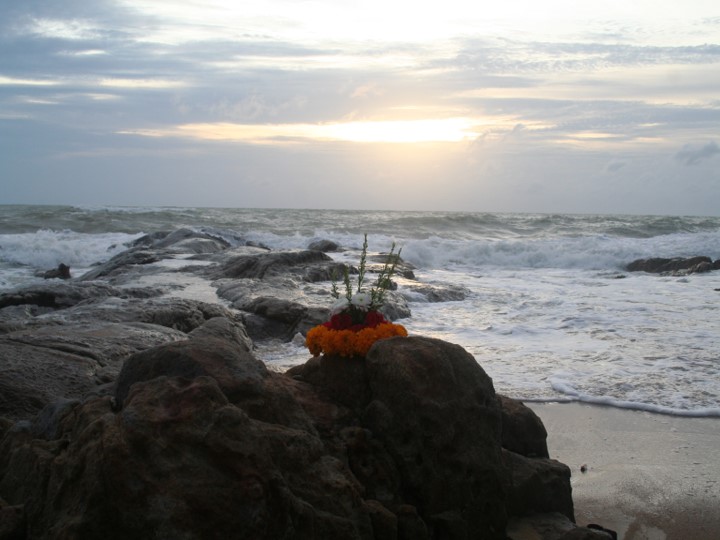Twenty years ago, a man stood on a faraway beach filming the sea. He held a child in his arm as he filmed.
It was a beautiful morning. The sun had crested the mountainous skyline that was behind him, and a gentle breeze caused the crowns of the palm trees to rustle, ever so slightly.
There were exposed skerries of red granite in the foreground. Some were partly buried by sand. A fishing boat rested askew against one of them. Between the skerries, pools of seawater were warmed by the first rays of morning sunshine. Beyond the skerries, was the sea. And faraway, on the horizon, a wave was breaking.
The man was not alone. There were other tourists. Families with children. And there were locals. One of them, a boy, was collecting fish from one of the pools and putting them in a plastic carrier bag.
It was beautiful, but it was all wrong.
The skerries should not have been visible. They should have been covered by the sea.
The fish should not have been there. They had been trapped in the pools between the skerries, half an hour earlier when the sea vanished from the shore.
The wave that was breaking, was not a normal wave.
It was the tsunami.
Then a fishing boat was flipped up on end and consumed by the wave.
The man stopped filming and ran.
He had forty-five seconds.
Until the moment when the fishing boat flipped over, it would have been almost impossible to know that it was a tsunami.
For a person of average height standing at the edge of the sea, the horizon is just five kilometres away. As the tsunami neared the shore, its average speed was 33 kilometres per hour. That meant that it crested the horizon nine minutes before striking the shore.
A tsunami grows in height as it approaches the shore. It would have been half its height-at-impact when it crested the horizon. This would have made it harder for anyone standing on the shore to know how big it was.
But there were signs.
The sea had vanished from the shore and there was a wave breaking on the horizon.
And there are signs.
Heatwaves are happening more often. And they are hotter.
Storms are happening more often. And they are more powerful.
The ice is melting and the sea is rising.
But we do not run.
We stand and watch with our loved ones around us, while the wave the climate crisis bears down upon us all.
It has been twenty years since the Boxing Day tsunami was triggered by the Great Sumatra-Andaman Earthquake of 26 December 2004.
In those twenty years:
The concentration of carbon dioxide in the air that we breathe rose by 48 parts-per-billion.
Today, we are at 424 parts-per-billion. It should be 280 parts-per-billion. That means that one-in-three carbon dioxide molecules in the air were put there by us.
The wave is growing taller.
In those twenty years:
The carbon dioxide we have added to the air has warmed the climate by 0.7 degrees.
Today, we are approaching 1.6 degrees of climate warming.
The wave is bearing down upon us.
In those twenty years:
Our annual emissions of fossil carbon dioxide rose by 8.4 billion tons to 37.0 billion tons, mostly from burning fossil fuels and making cement.
Today, we are adding 100 times more fossil carbon dioxide to the air than are being added naturally by metamorphism and volcanic eruptions (which are the only natural sources of fossil carbon dioxide).
We stand and watch.
The man who was filming survived.
We know he survived, because he did not stop filming.
We see glimpses of jungle foliage, and we hear is heavy breathing and hurried footsteps, as he runs. We hear the wave hit the shore. After twelve minutes, he stops running, and we see the swirling ocean far below him, filling the place where the village had been.
The man reached high ground.
He reached high ground because he still had time and because there was high ground.
And there is high ground and we still have time.
If we reduce our carbon dioxide emissions, the wave will become smaller.
If we massively reduce our carbon dioxide emissions, the wave will stop bearing down on us.
If we massively reduce our carbon dioxide emissions immediately, we can still protect our loved ones.
Alasdair Skelton on Boxing Day 2024

